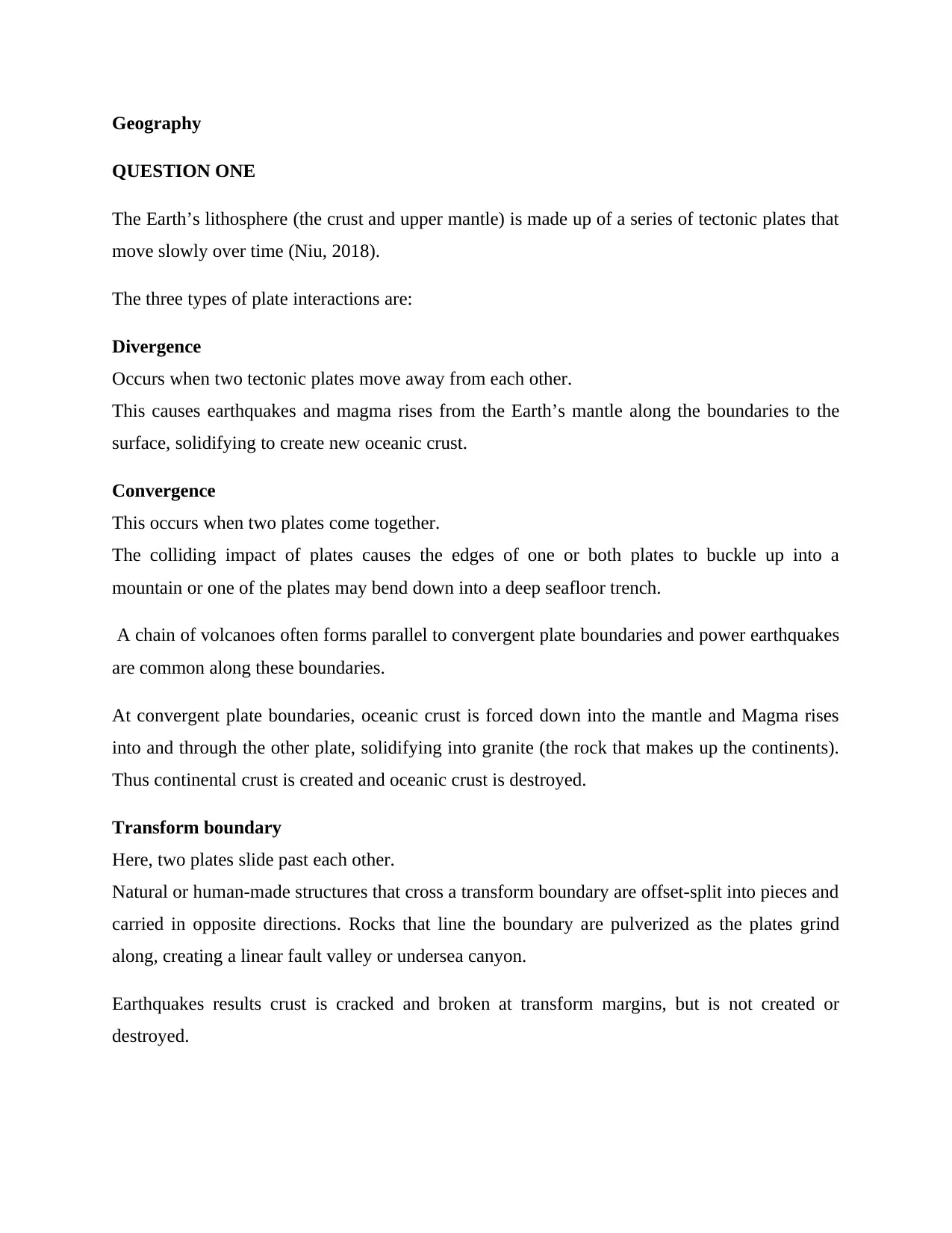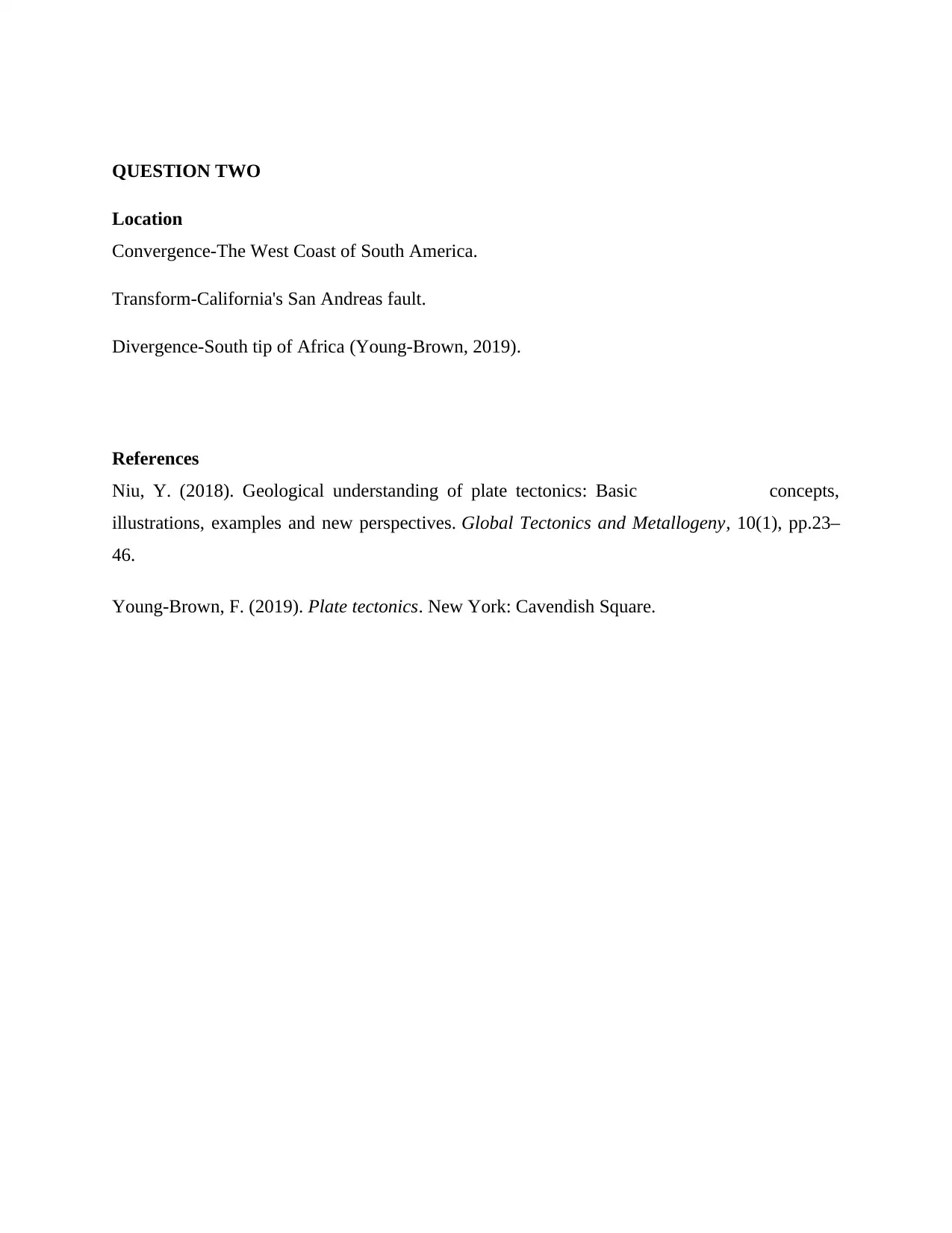Plate Tectonics: A Detailed Analysis of Earth's Surface Processes
VerifiedAdded on 2022/08/28
|2
|338
|18
Homework Assignment
AI Summary
This assignment provides a comprehensive overview of plate tectonics, detailing the three primary types of plate boundaries: divergence, convergence, and transform. The assignment explains how each boundary type influences Earth's surface, including the creation of new oceanic crust, the formation of mountains and volcanoes, and the occurrence of earthquakes. It also provides specific examples of each boundary type, such as the West Coast of South America (convergence), the San Andreas fault in California (transform), and the south tip of Africa (divergence). The assignment references key scholarly sources to support its explanations, offering a strong foundation for understanding the complexities of plate tectonics and its impact on the planet.
1 out of 2








![[object Object]](/_next/static/media/star-bottom.7253800d.svg)